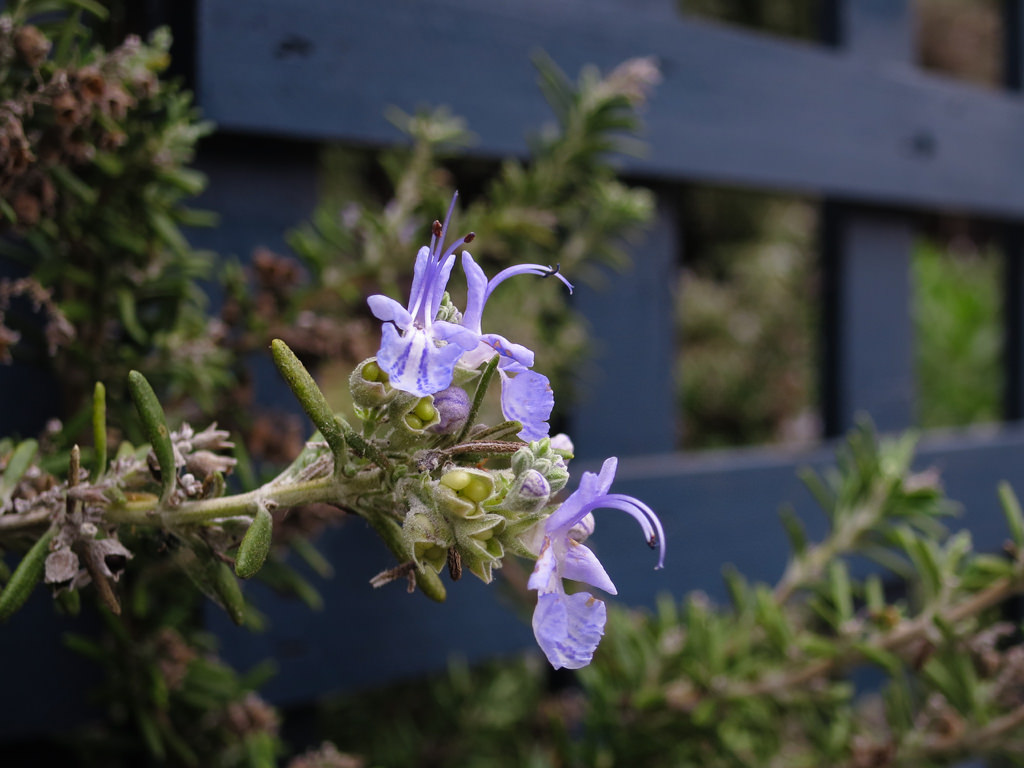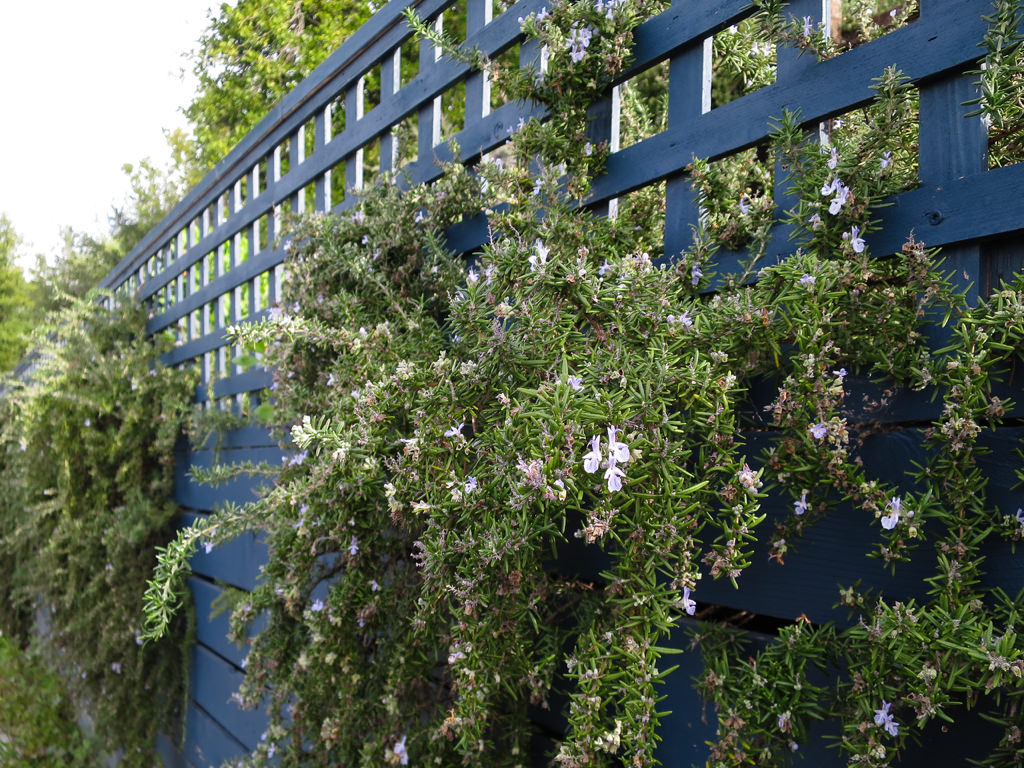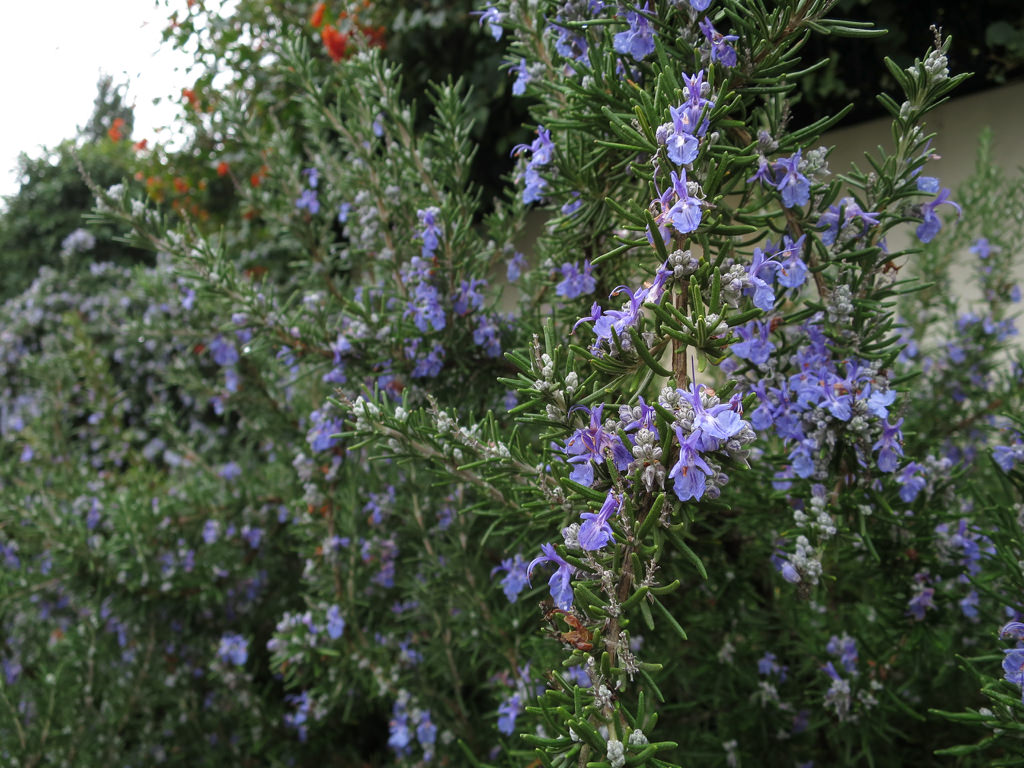Rosmarinus officinalis
(Salvia rosmarinus)
Rosemary

Native to the Mediterranean, this herb dates back to Ancient Greece. Praised for its aroma and decorative appeal, Rosemary also offers culinary and medicinal uses. Fresh or dried leaves add flavor to meat and vegetable dishes as well as beverages. Rosemary tea or infused oil can enhance memory and concentration, improve digestion, blood circulation, and boost the immune system.
Cherished for its sensuous fragrance and visual charm, this versatile perennial thrives in a variety of landscapes in Woodland Hills. Nearly all year round, clusters of small flowers ranging from dark to light blue, purple, pink, and white cheerfully flow out of patio containers, cascade down the border walls, peek from the hedges, or roll out as a carpet of irresistibly scented ground cover.
Low-growing varieties of this perennial evergreen shrub rise to 24 inches tall, while upright varieties reach 6 feet high. Rosemary thrives in full sun and well-drained soil, awarding its custodian with a mesmerizing aroma and clusters of flowers that attract bees, butterflies, and hummingbirds. In California, rosemary blooms in cool weather.
Quick facts
Height: 2 to 6 feet
Width: 2 to 6 feet
Leaves: evergreen
Soil: clay, loam, sand, well-drained
pH: acid, alkaline, neutral
Exposure: full sun
Water: low, average
Tolerance: drought tolerant
Toxicity: toxic when ingested in large doses
Wildlife: attracts bees and butterflies



References
Gardenia. (n.d.). Rosemary: Learn how to plant, grow and harvest. https://www.gardenia.net/guide/how-to-plant-grow-harvest-rosemary
Kusch, M. (n.d.). Gardening for Pollinators: What to Plant and Why. University of California Davis, Arboretum and Public Garden. https://arboretum.ucdavis.edu/sites/g/files/dgvnsk1546/files/inline-files/why-garden-for-pollinators.pdf